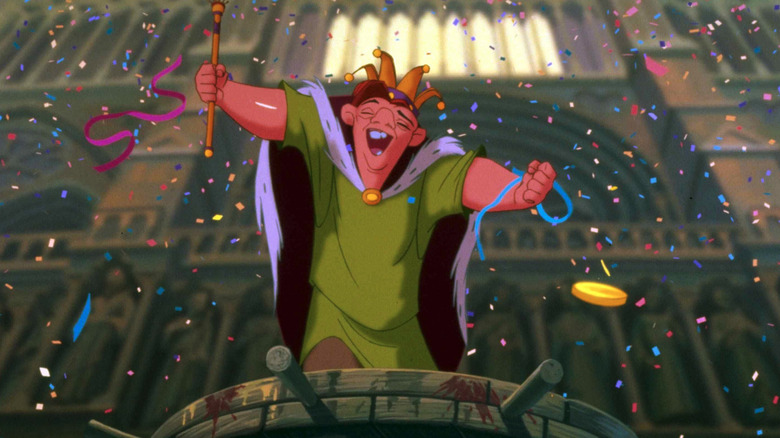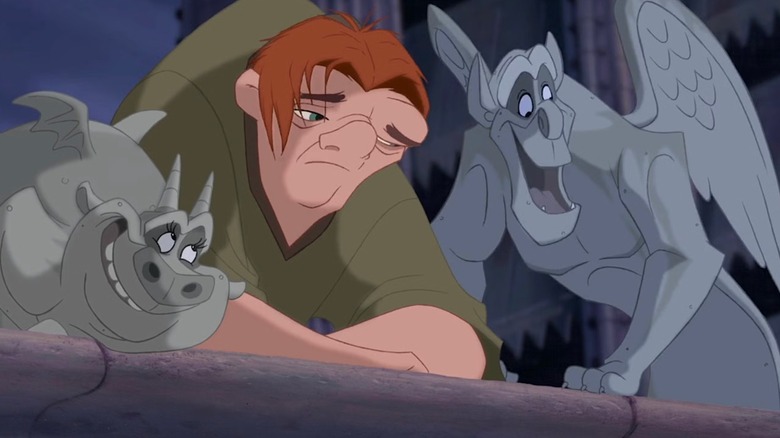A Disney classic is the only animated film to receive an Oscar and Razzie nomination

If you need one more reason to dismiss the Golden Raspberry Awards, which “honor” the supposedly worst films of a given year: In 1997, Disney’s “The Hunchback of Notre Dame” received a nomination in the “Worst Written Film Grossing Over $100 Million” category. Of all the Disney films you could nominate for the Razzies, would you choose one of the most daring and ambitious?
“Hunchback” also won a much less dubious honor at the Oscars: Best Original Musical or Comedy Score, a well-deserved accolade for Alan Menken’s compositions and Stephen Schwartz’s lyrics.
“The Hunchback” also earned 13 nominations for the animation-focused Annie Awards, the most nominations of any film that year. (Tony Jay, nominated for Best Director in Voice Acting, really should have won for his portrayal of the evil Judge Claude Frollo.) So, with all the acclaim, why the Razzie? “The Hunchback” directors Gary Trousdale and Kirk Wise helped usher in the Disney Renaissance with “Beauty and the Beast” in 1991. That meant expectations were high and “The Hunchback” didn’t meet them all.
In his contemporary review, Roger Ebert called it the best Disney film since Trousdale & Wise’s last. “I wondered if ‘The Hunchback of Notre Dame’ could work as a Disney animated feature,” Ebert opened before spending the review explaining how the film proved his doubts wrong. Conversely, Janet Maslin of The New York Times praised the efforts and passion of the filmmakers, but derided the film’s sentimentalism and tonal inconsistency.
“There’s just no way to delight children with a heartwarming version of this story,” Maslin said, describing the film as a “self-parody” of Disney that attempted to mix dark source material with fanciful songs. Clearly, Razzie voters sided with Maslin. For many others, however, this obscurity is what makes “Hunchback” a flawed masterpiece. What makes it “imperfect” is that it had to be a Disney film.
The Hunchback of Notre Dame’s reaction was undeserved
“The Hunchback of Notre Dame” adapts French author Victor Hugo’s 1831 novel, named after its main character, Quasimodo (Tom Hulce in the film), a deformed man who rings the bells of the real Notre-Dame Cathedral in Paris. Quasimodo was abandoned at birth and raised by Frollo. (In the film, Frollo murdered Quasimodo’s mother and raised the boy as penance.) In the novel, Frollo is a priest, not a judge like in the film. In both versions, he is obsessed with Romani girl Esmeralda (Demi Moore), who not fulfill his desire. In the novel, Frollo’s lust is a descent into evil, whereas in the film he is already evil and wants to exterminate the entire Romani population of Paris. Quasimodo also longs for Esmeralda, but she is in love with the handsome Captain Phoebus (Kevin Kline).
Hugo’s novel is a tragedy – a dark story, devoid of sympathetic characters and from which there is no escape of hope. Disney specializes in G-rated children’s films, so to adapt “The Hunchback,” changes were necessary. Obviously there’s a happy ending, and the central theme is transformed into a kid-friendly lesson about not judging someone’s inner self by their physical appearance. Some of the controversial parts of the novel are removed; see how Frollo is still a religious fanatic, but not a true agent of the Church.
Frollo’s desire for Esmeralda is not disinfected, however. His villain song, “Hellfire”, sees him begging Beata Maria for guidance and mercy. The song ends with Frollo declaring that he will condemn Esmeralda to the “flames of this world and the next” if she does not submit to him. Compare one of Hulce’s earlier films, 1984’s “Amadeus”: Frollo covets Esmeralda the way Salieri (F. Murray Abraham) coveted Mozart’s (Hulce) musical talent. Salieri and Frollo blame God for the curse of wanting what they cannot have.
The tone is where the Hunchback of Notre Dame stumbles
“Hellfire” gets a lot of (deserved) attention because of its darkness, but it’s just one beautiful song among many. “Hunchback” contains some of the most radical and mature Disney songs. Quasimodo’s desire to see the world is felt in “Out There”, sung rapturously by Hulce. In “God Help The Outcasts”, Esmeralda sings (Heidi Mollenhauer replaces Moore), asking God to give hope to her people. The song contrasts his sincere and humble faith with other believers selfishly praying for their own benefit, a bold message in a gentle song.
But among these beautiful songs, there is also the zany “A Guy Like You”, where Quasimodo’s (imaginary?) gargoyle friends try to convince him to confess to Esmeralda.
Many identify gargoyles as THE problem with “The Hunchback”. They’re Disney’s funny sidekicks, like the talking furniture in “Beauty and the Beast,” there to entertain children at the expense of the film’s otherwise dramatic tone. In /Film’s oral history of “The Hunchback of Notre Dame,” Trousdale explained: “In the book and in several films, Quasimodo talks to gargoyles. We thought, “It’s Disney, we’re making a cartoon.” The gargoyles can answer. » »
Wise added that they were while trying to liven up the film with the gargoyles, lest the image be a “hollow of despair”. Trousdale admitted that the negative reception to the gargoyles set him back a bit: “They’re a bit silly and they undermine gravity, but speaking with friends who were kids at the time, they only have good memories.”
Are gargoyles a symptom of a deeper problem? Is the “Hunchback” story too inconsistent with Disney’s brand of storytelling? Perhaps that’s what Razzie voters thought at the time, but the heights of the Hunchback are as imposing as the cathedral itself. I pity those who cannot see them.






